Hyundai i30 vs Nissan X-Trail – Differences & prices compared
Compare performance, boot space, consumption and price in one view.
Find out now: which car is the better choice for you – Hyundai i30 or Nissan X-Trail?
The Hyundai i30 (Hatchback) comes with a Petrol or Petrol MHEV engine and Manuel or Automatic transmission. In comparison, the Nissan X-Trail (SUV) features a Petrol MHEV or Full Hybrid engine with Automatic transmission.
When it comes to boot capacity, the Hyundai i30 offers 395 L, while the Nissan X-Trail provides 585 L – depending on how much space you need. If you’re looking for more power, decide whether the 140 HP of the Hyundai i30 or the 213 HP of the Nissan X-Trail suits your needs better.
In terms of consumption, the values are 5.70 L per 100 km for the Hyundai i30, and 5.70 L for the Nissan X-Trail.
Price-wise, the Hyundai i30 starts at 24000 £, while the Nissan X-Trail is available from 34000 £. Compare all the details and find out which model fits your lifestyle best!
Hyundai i30
The Hyundai i30 stands out in the hatchback segment with its sleek design and modern features. It offers a comfortable ride with a well-crafted interior that caters to both driver and passengers. With its emphasis on safety and technology, the i30 provides a balanced driving experience suitable for urban and suburban environments.
details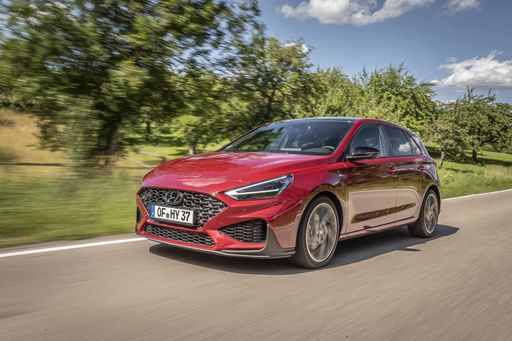 @ hyundai.news
@ hyundai.news
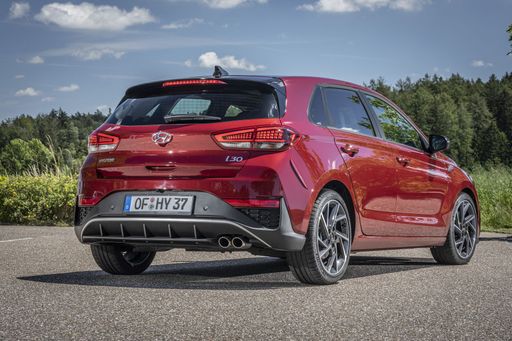 @ hyundai.news
@ hyundai.news
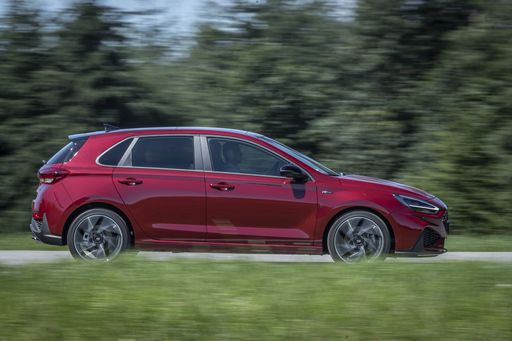 @ hyundai.news
@ hyundai.news
 @ hyundai.news
@ hyundai.news
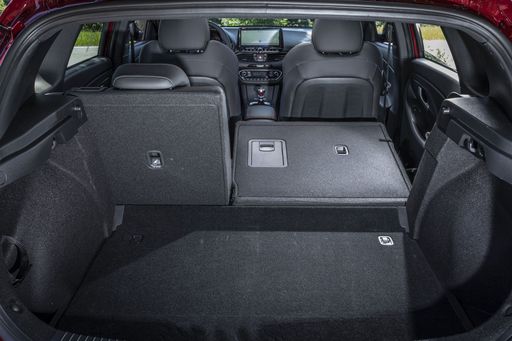 @ hyundai.news
@ hyundai.news
Nissan X-Trail
The Nissan X-Trail stands out with its spacious interior and practical design, making it an ideal choice for families and adventure enthusiasts alike. Its sleek exterior styling is complemented by modern technology features that enhance both driving pleasure and safety. This versatile SUV offers a comfortable ride, whether navigating city streets or exploring off-road paths, ensuring you travel in style and comfort.
details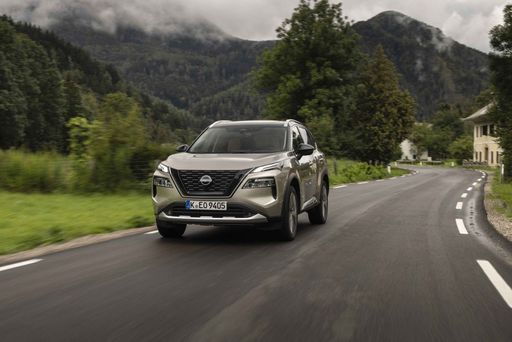 @ germany.nissannews.com
@ germany.nissannews.com
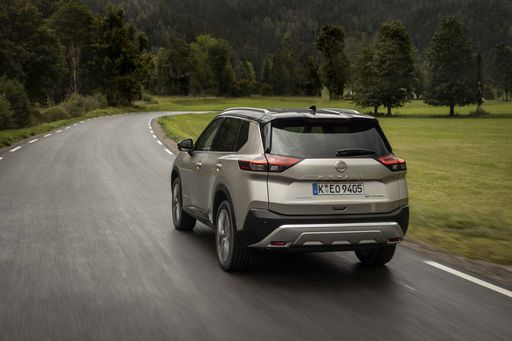 @ germany.nissannews.com
@ germany.nissannews.com
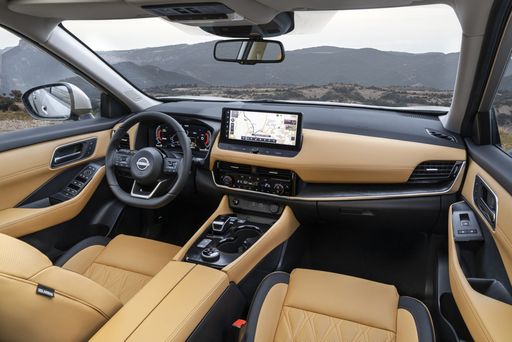 @ germany.nissannews.com
@ germany.nissannews.com
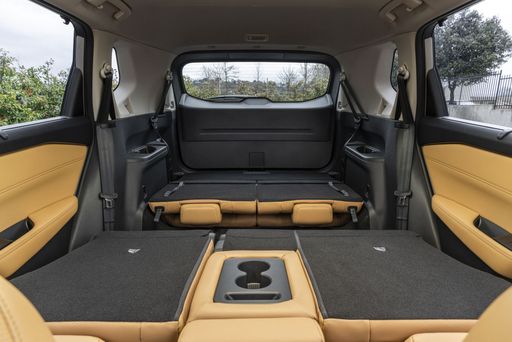 @ germany.nissannews.com
@ germany.nissannews.com

|

|
|
|
|
Costs and Consumption |
|
|---|---|
|
Price
24000 - 29300 £
|
Price
34000 - 50400 £
|
|
Consumption L/100km
5.7 - 6 L
|
Consumption L/100km
5.7 - 6.9 L
|
|
Consumption kWh/100km
-
|
Consumption kWh/100km
-
|
|
Electric Range
-
|
Electric Range
-
|
|
Battery Capacity
-
|
Battery Capacity
-
|
|
co2
130 - 136 g/km
|
co2
131 - 161 g/km
|
|
Fuel tank capacity
50 L
|
Fuel tank capacity
55 L
|
Dimensions and Body |
|
|---|---|
|
Body Type
Hatchback
|
Body Type
SUV
|
|
Seats
5
|
Seats
5 - 7
|
|
Doors
5
|
Doors
5
|
|
Curb weight
1291 - 1407 kg
|
Curb weight
1668 - 1961 kg
|
|
Trunk capacity
395 L
|
Trunk capacity
177 - 585 L
|
|
Length
4340 mm
|
Length
4680 mm
|
|
Width
1795 mm
|
Width
1840 mm
|
|
Height
1455 mm
|
Height
1720 mm
|
|
Payload
463 - 509 kg
|
Payload
432 - 574 kg
|
Engine and Performance |
|
|---|---|
|
Engine Type
Petrol, Petrol MHEV
|
Engine Type
Petrol MHEV, Full Hybrid
|
|
Transmission
Manuel, Automatic
|
Transmission
Automatic
|
|
Transmission Detail
Manual Gearbox, Dual-Clutch Automatic
|
Transmission Detail
-
|
|
Drive Type
Front-Wheel Drive
|
Drive Type
Front-Wheel Drive, All-Wheel Drive
|
|
Power HP
100 - 140 HP
|
Power HP
163 - 213 HP
|
|
Acceleration 0-100km/h
9.6 - 13.1 s
|
Acceleration 0-100km/h
7 - 9.6 s
|
|
Max Speed
178 - 197 km/h
|
Max Speed
170 - 200 km/h
|
|
Torque
172 - 253 Nm
|
Torque
300 - 525 Nm
|
|
Number of Cylinders
3 - 4
|
Number of Cylinders
3
|
|
Power kW
74 - 103 kW
|
Power kW
120 - 157 kW
|
|
Engine capacity
998 - 1482 cm3
|
Engine capacity
1497 cm3
|
General |
|
|---|---|
|
Model Year
2024
|
Model Year
2024
|
|
CO2 Efficiency Class
D, E
|
CO2 Efficiency Class
F, D, E
|
|
Brand
Hyundai
|
Brand
Nissan
|
Hyundai i30
Introducing the Hyundai i30: A Blend of Performance and Innovation
The Hyundai i30 continues to impress the automotive world with its fine balance of performance, efficiency, and cutting-edge technology. As a quintessential hatchback, the i30 caters to a diverse range of drivers, offering a remarkable driving experience through its impressive powertrains and compact yet stylish design.
Dynamic Performance Options
At the heart of the Hyundai i30 lies a variety of engine choices designed to suit different driving preferences. The power output ranges from 100 PS to 280 PS, allowing drivers to choose an i30 that perfectly matches their performance needs. Whether you're inclined towards the spirited drive of the N Performance variants or prefer the efficiency of the mild hybrid versions, there’s a powertrain tailored for you.
Innovative Hybrid Technology
For those seeking enhanced fuel efficiency without compromising on power, the i30’s 48V mild-hybrid system offers a compelling option. Available with both manual and automatic transmissions, this innovative technology provides an ideal balance, reducing emissions and improving fuel consumption, with an impressive average of just 5.7 L/100km.
Sophisticated Design and Features
The Hyundai i30’s sleek design is complemented by thoughtful interior features that elevate the driving experience. With a boot space ranging from 395 to 450 litres, this hatchback ensures ample room for all your luggage needs. Furthermore, the car's aesthetic appeal is matched by its practical ergonomic layout, catering to both style enthusiasts and those seeking functionality.
Advanced Safety and Technology
The i30 is equipped with an array of advanced safety features, enhancing driver confidence and ensuring passenger safety. Its cutting-edge safety suite includes lane-keeping assist, forward collision warning, and adaptive cruise control. Additionally, the i30 offers a modern infotainment system, designed to keep you connected and entertained on every journey.
Conclusion: A Versatile Choice for Modern Drivers
The Hyundai i30 is more than just a hatchback; it’s a remarkable amalgamation of power, efficiency, and modern technology. Whether you're enticed by the high-performance models or the eco-friendly mild-hybrid variants, the i30 stands out as a versatile choice that meets the demands of today’s discerning drivers.
Nissan X-Trail
A New Era for the Nissan X-Trail
The 2024 Nissan X-Trail ushers in a new era of innovation and performance, catering to modern drivers who seek versatility, efficiency, and cutting-edge technology. With its striking design and advanced hybrid technologies, the X-Trail is poised to capture the interest of SUV enthusiasts around the globe.
Innovative Powertrains
Nissan has equipped the X-Trail with an array of innovative powertrains to meet diverse driving needs. Options include both mild-hybrid and full-hybrid technologies, with a 1.5 VC-T engine at the heart of its power delivery. Offering up to 213 PS, the X-Trail’s hybrid systems promise a blend of performance and efficiency, with fuel consumption ranging from 5.7 to 6.9 L/100km.
Seamless All-Wheel Drive
One of the standout features of the X-Trail is its seamless all-wheel-drive system, dubbed e-4ORCE. This advanced system ensures optimal traction and stability, providing confidence across various terrains and weather conditions. Available in selected trims, it complements the robust, SUV design perfectly.
Designed for Comfort and Functionality
The X-Trail offers a spacious interior, designed to seat up to seven passengers comfortably. With multiple seating configurations and a boot capacity ranging from 177 to 585 litres, it is ideal for family outings and adventurous road trips. The interior is designed with a focus on ergonomic comfort and intuitive technology, featuring advanced infotainment systems that keep drivers connected on the move.
Technological Advancements
The 2024 X-Trail boasts an impressive suite of technological advancements, including Nissan’s ProPILOT system. This driver assistance technology makes highway driving safer and more comfortable by helping control acceleration, braking, and steering within a single lane. Combined with the latest safety features, such as automatic emergency braking and blind-spot monitoring, the X-Trail sets a new standard in vehicle safety.
Efficiency Meets Performance
The 2024 Nissan X-Trail is engineered to provide a balance of efficiency and performance. With a range of CO2 efficiency classes from E to F, it positions itself as both an eco-friendly and powerful option within the SUV segment. Moreover, the smooth CVT transmission ensures a dynamic drive that adapaits to the driver's needs, whether navigating city streets or exploring off-road trails.
Conclusion
In conclusion, the Nissan X-Trail offers a compelling package for SUV buyers, blending cutting-edge hybrid technology, advanced safety features, and versatile design. It stands as a testament to Nissan’s commitment to innovation and continues to push the boundaries of what an SUV can offer in the modern age.
Which drive types are available for the Hyundai i30?
Available as Front-Wheel Drive.
The prices and data displayed are estimates based on German list prices and may vary by country. This information is not legally binding.
